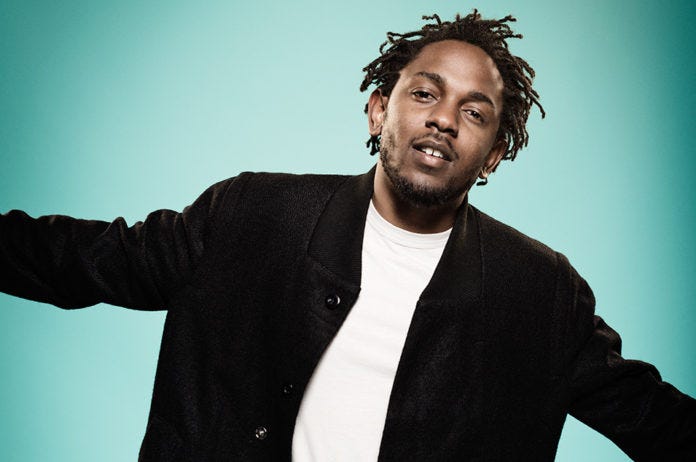The Meaning Behind "Money Trees", Kendrick Lamar
An in-depth look at a hit that goes far beyond addictive beats.
"Money Trees" has been born a classic.
Since its release in 2012, the song has won over many listeners who may not have even known the mastermind behind it, transforming them into admirers of its calm yet energetic beats and powerful rhymes, which play out over more than 6 minutes.
With over 1 billion streams on Spotify, the hit from the album good kid, m.A.A.d city has not only solidified Kendrick Lamar's career but also marked a significant moment in hip-hop history.
"Money Trees" achieved platinum status in countries such as the United States, Portugal, England, and New Zealand, firmly establishing Kendrick as one of the genre's leading artists.
However, Lamar's single carries more weight than just energetic beats; it also delves into aspects of life that no one wants to experience.
Let's take a look into the deeper meaning behind the rapper's masterpiece.
Creating "Money Trees”
The creation of "Money Trees" was a meticulous and collaborative process led by hip-hop producer DJ Dahi.
Dahi is known for his work with other acclaimed names like Drake, Travis Scott, and J. Cole.
Immersed in work that went far beyond the classic themes that massively compose the genre's albums, such as anger, sex, and drugs, the producer was tasked with finding the perfect sample to support Kendrick's vocals.
In an interview with NPR, Dahi explains that choosing a sample involves three types of manipulation: looping, chopping, and playing it backward.
Conspiracy theorists always warned about the power of playing things backward. Who hasn't been cautioned against doing that while listening to Led Zeppelin's Stairway to Heaven?
Jokes apart, Dahi found the perfect foundation for Kendrick Lamar to lay down his verses by sampling "Silver Soul", a song by the alternative band Beach House.
Understanding the Lyrics
good kid, m.A.A.d city tells the coming-of-age story of K.Dot - a young teenager in Compton grappling with maturation and gang violence - as he evolves into Kendrick Lamar. Each song represents a moment in his life.
In "Money Trees," the rapper offers an introspective look at the struggles and aspirations of youth raised in the impoverished neighborhoods of Compton.
The song, brimming with wordplay and vivid depictions of street life, embodies a raw narrative of Lamar's early life and the desperate measures taken to survive, all while critiquing society and the concept of materialism.
Uh
Me and my niggas tryna get it, ya bish? (Ya bish?)
Hit the house lick, tell me, is you wit' it, ya bish? (Ya bish?)
Home invasion was persuasive (was persuasive)
From nine to five, I know it's vacant, ya bish? (Ya bish?)
Dreams of livin' life like rappers do (like rappers do)
Back when condom wrappers wasn't cool (they wasn't cool)
In the song's opening lines, Lamar describes himself and his crew striving to "come up”, indicating their efforts to earn money, attain success, or, more broadly, escape the harsh realities of street life. The expression "Hit the house lick" alludes to burglarizing a house, undertaken in a desperate attempt for survival.
I fucked Sherane and went to tell my bros (tell my bros)
Then Usher Raymond, Let It Burn, came on (Let Burn came on)
“I fucked Sherane and went to tell my bros” alludes to his involvement with a girl named Sherane, serving as a metaphor for the temptations and distractions that led him astray during his journey.
The narrator also implies that the encounter with Sherane was unprotected, hinting that “Let it Burn" is a symptom of a sexually transmitted disease (STD).
Moving on a little further, we have the chorus.
It go Halle Berry
Or hallelujah
Pick your poison, tell me what you doin'
“Halle Berry or hallelujah / Pick your poison, tell me what you doing” presents the choice between materialism (symbolized by Halle Berry, a symbol of Hollywood success) and spiritual salvation (symbolized by the religious exclamation “hallelujah”).
Everybody gon' respect the shooter
But the one in front of the gun lives forever
(The one in front of the gun, forever)
The chorus continues with the line 'But the one in front of the gun lives forever,' a chilling remark implying that gaining respect through violence only leads to the glorification of one's death.
K.Dot also reflects on the devastation and senseless deaths caused by gang violence in his community, likening it to a war zone.
Back to reality, we poor, ya bish? (Ya bish?)
Another casualty at war, ya bish? (Ya bish?)
Two bullets in my Uncle Tony head (my Tony head)
He said: One day I'll be on tour, ya bish? (Ya bish?)
All the violence and anger reverberated through social criticism in the verses are frequently paralleled in the song by K.Dot's pursuit of money and material goods — paths presented as an escape from the harsh realities of living in neighborhoods like Compton.
In the following excerpt, this is symbolized through the money trees, representing prosperity.
Through canals and alleyways, just to say
Money trees is the perfect place for shade
And that's just how I feel
Got It?
“Money Trees” is a masterpiece played incessantly on the headphones not only for its groove but also for the cadenced and addictive verses that leave such heavy, light, and addictive themes to listen to and reflect on.





